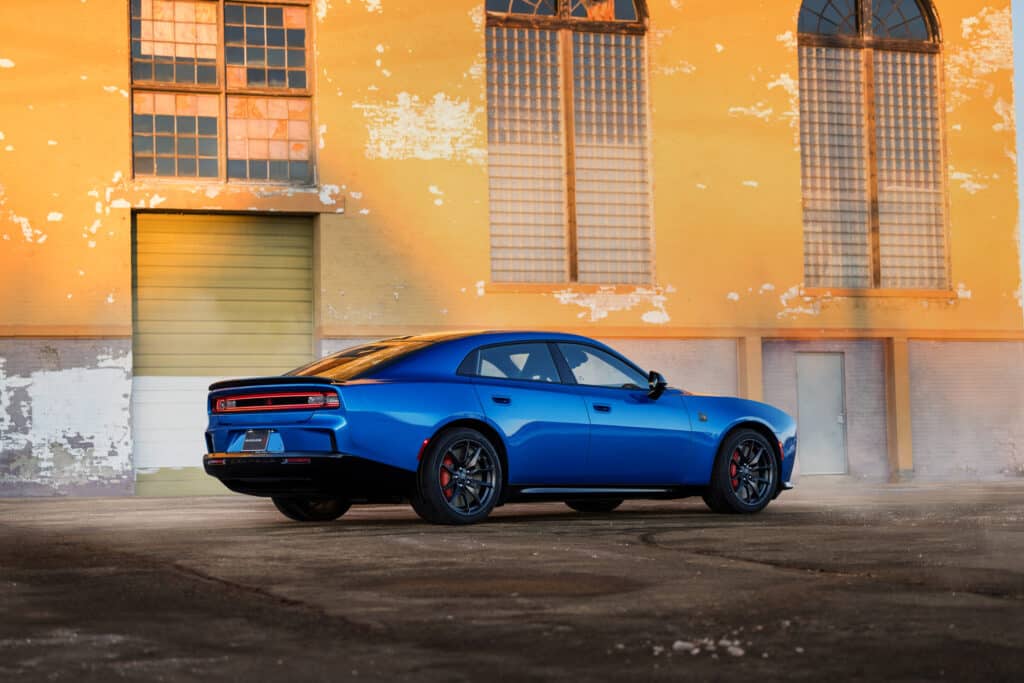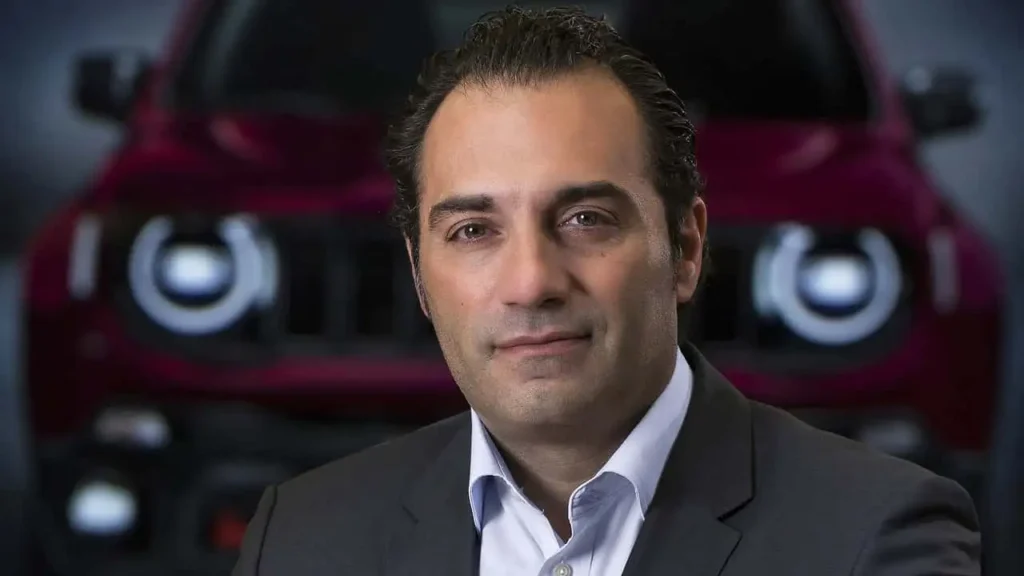How Will New Stellantis CEO Face the EV Challenge?
Antonio Filosa will be the new CEO of Stellantis on June 23. At that time, he’ll officially take over from Carlos Tavares, who resigned from the post in early December. The biggest question on everyone’s mind is how will Filosa handle the the company’s highly difficult and tremendously expensive transition from internal combustion engine (ICE) vehicles to fully electric? Tavares strongly supported the transition to electric vehicles (EVs). It will be interesting to see how closely Filosa follows that tradition.
Most analysts believe Tavares was forced out due to the company’s significant financial difficulties last year, largely thought to be a result of mishandling the EV transition. Motor Trend reported that In 2024, The automaker lost five points of market share in North America and in Europe. Adjusted operating income plunged to $9 billion. Revenue was down 17 percent to $165 billion with 12 percent fewer shipments. The $5.8 billion net profit was a whopping 70 percent drop.
It’s very clear that electric vehicles are the future. EVs are more eco friendly, offering lower ownership costs over time, and bring a host of other benefits, for example much more convenient charging for homeowners rather than frequent visits to gas stations. Stellantis knows this and like all automakers, plans to increase EV production at some point. But the timing is the question, many automakers are jumping on the hybrid bandwagon this year, as battery electric vehicle (BEV) adoption still faces significant challenges for many drivers. EV sales remain strong in 2025, despite various headwinds.
Energy Digital reported that according to the International Energy Agency’s (IEA) Global EV Outlook 2025, the global electric vehicle (EV) transition continues to upend traditional energy patterns. Despite some dubious news reports suggesting a slowdown, the global EV transition has continued to accelerate in 2025. Therefore, companies like Stellantis are realizing EVs must be a cornerstone of their production plans, to stay competitive and to remain in business.

The EV Transition is Very Difficult and Expensive, But Worth It
The shift to electric vehicles (EVs) isn’t just about swapping out engines — it’s a full-scale transformation that touches every part of the automotive business. While startups like Rivian were built from the ground up for an electric future, legacy automakers like Stellantis — the parent company of Jeep, Dodge, Ram, Chrysler, Peugeot, Fiat, and others — face a steeper climb.
Stellantis operates dozens of manufacturing plants, thousands of dealerships, and a global supply chain optimized for internal combustion engine (ICE) vehicles. Retooling this infrastructure for EV production is costly and time-consuming. Factories built to crank out V8 engines aren’t easily converted into EV battery assembly lines.
This isn’t just a logistical problem — it’s also a financial one. Maintaining profitability while overhauling core operations puts enormous strain on balance sheets. Every dollar spent modernizing a facility is a dollar not spent on design, innovation, or brand differentiation.
Stellantis relies on an extensive franchise dealer network. These dealers are deeply invested in traditional service models — and EVs require far less maintenance than ICE vehicles. Less maintenance means less revenue for dealerships, and that creates tension.
Some dealers have been reluctant to invest in EV charging equipment or retrain staff without clear signs of customer demand. Others are resistant to change altogether. That friction can delay adoption and water down the customer experience for EV buyers.
What happens when a brand built on horsepower and engine roar tries to go silent? Stellantis faces a branding challenge. Dodge’s muscle cars, Jeep’s off-road grit, and Ram’s heavy-duty trucks have long been tied to ICE performance. Translating those identities into the EV world — without alienating loyal customers — is a tightrope act.
For example, Dodge is experimenting with artificial “engine” sounds on its EV Charger Daytona concept to preserve its muscle car image. It’s a clever nod to tradition, but also a sign of how hard it is to reconcile legacy brand DNA with a quiet, digital-first future.
Recently, Dodge officially discontinued the base version of the all-electric Charger Daytona, the R/T, for the 2026 model year.
Stellantis and other legacy automakers are playing catch-up in software development and user experience. To compete, Stellantis is investing in in-house software platforms (like the STLA Brain architecture) and partnering with tech firms. But building the talent, culture, and systems for this kind of innovation takes time — and missteps along the way can damage credibility with tech-savvy consumers.
What’s more, while companies like BYD can focus heavily on EV innovation, Stellantis must still maintain and develop its profitable gas-powered models to meet existing demand — a resource tug-of-war that slows momentum.

Filosa Faces a Monumental Challenge
Filosa steps into the CEO role at Stellantis with no shortage of pressure — and no shortage of legacy. The groundwork for transformation has been laid by key leaders like European manager Jean-Philippe Imparato and Chairman John Elkann, both of whom have made the company’s future direction unmistakably clear. The pair recently spoke about the company’s vision:
“Don’t launch more cars, but have the right engines, developing especially hybrids and range extenders,” the Italo-Frenchman’s latest statements at Automotive Dealer Day 2025.
“The real priority—the phrases of the scion of the Agnelli house, in tune with Renault—is to accelerate the turnover, with varied and competitive technologies. The average age of cars in Europe is 12 years, and in some countries like Greece it is as high as 17. To focus only on new zero-emission cars is short-sighted.”
Stellantis sells vehicles in over 130 countries. Some markets, like Europe, are pushing aggressive EV mandates. Stellantis will face a planned end to gasoline- and diesel-powered cars in Europe in 2035. Others, such as parts of Latin America and the U.S. Midwest, remain ICE strongholds. Balancing EV rollout across diverse regulatory, infrastructure, and consumer landscapes adds complexity.
Italy at the Center — On Paper
In late 2024, Stellantis made its commitment to Italy official with the unveiling of the Italy Plan — a pledge to keep the country front and center in the company’s manufacturing strategy. As part of that plan, Stellantis promised to produce two new “economic” vehicle models in Pomigliano d’Arco (Naples) by 2028. These vehicles will be built on the flexible STLA Small platform, capable of supporting electric, hybrid, and internal combustion powertrains.
This was a clear signal: despite the growing push for EVs, Stellantis isn’t going all-in on battery power just yet. At least for now, the company’s future is multi-energy — a pragmatic approach to a volatile market that values flexibility as much as innovation.
A Gigafactory in Limbo
Yet, for all the ambition, Filosa must now address a far more pressing and symbolic problem: the stalled Termoli Gigafactory project.
Originally slated to begin production of 40 GWh of EV batteries by 2026, the plant — a cornerstone of Stellantis’ ACC joint venture with Mercedes and TotalEnergies — has seen construction grind to a halt since June. This delay is not just a logistical concern; it’s a red flag. The slowdown reveals a critical uncertainty: EV demand in Europe remains too unpredictable to warrant full-speed investment, especially when high production costs make Italian-built EVs globally uncompetitive.
In the meantime, Stellantis has had to backtrack slightly, scheduling dual-clutch transmission production at the site just to keep it occupied.
The Cost Crisis
Chairman John Elkann did not mince words when he appeared in Parliament to explain why EVs made in Italy — or Europe — are struggling: energy prices in car-producing countries like Italy are five times higher than in China. Imparato put it even more bluntly: producing a car in Spain costs €516, while in Italy, the figure balloons to €1,414 when you factor in labor and energy costs.
This stark economic reality has placed Filosa’s biggest challenge in plain sight: bring down energy costs, or bring production elsewhere. With China’s EV manufacturers rapidly gaining market share — aided by cheap labor, government subsidies, and streamlined supply chains — Stellantis must fight a battle on two fronts: protect its European base while fending off increasingly competitive Chinese imports.
EV Lineup: A Patchwork of Pivots
Products will continue to be the cornerstone of Stellantis’ roadmap, and here, former CEO Carlos Tavares deserves some credit. Many upcoming models were designed with an electric-first philosophy, even if they’ll debut as multi-energy platforms.
Alfa Romeo will lead with the next-generation Stelvio, though its launch may be delayed due to strategic reassessments.
Opel is doubling down on fully electric performance models — a bold move, though one that failed to resonate with Abarth buyers, raising questions about whether Filosa might reintroduce combustion variants.
At the premium end, Maserati has seen multiple stumbles. Its all-electric MC20 has been scrapped, and launches of the new Quattroporte, Ghibli, and Levante have all been postponed.
Rather than a smooth rollout, Stellantis’ product plan currently resembles a jigsaw puzzle of delays, market recalibrations, and hybrid hedging. Filosa will need to piece it together carefully to avoid sending mixed signals to investors and customers alike. EVinfo.net recommends that at all times, the company keep its eye on battery electric vehicles for all of its brands and markets. Taking their eyes off those moving targets, even for a short time, could spell disaster.

Electric Vehicle Marketing Consultant, Writer and Editor. Publisher EVinfo.net.
Services